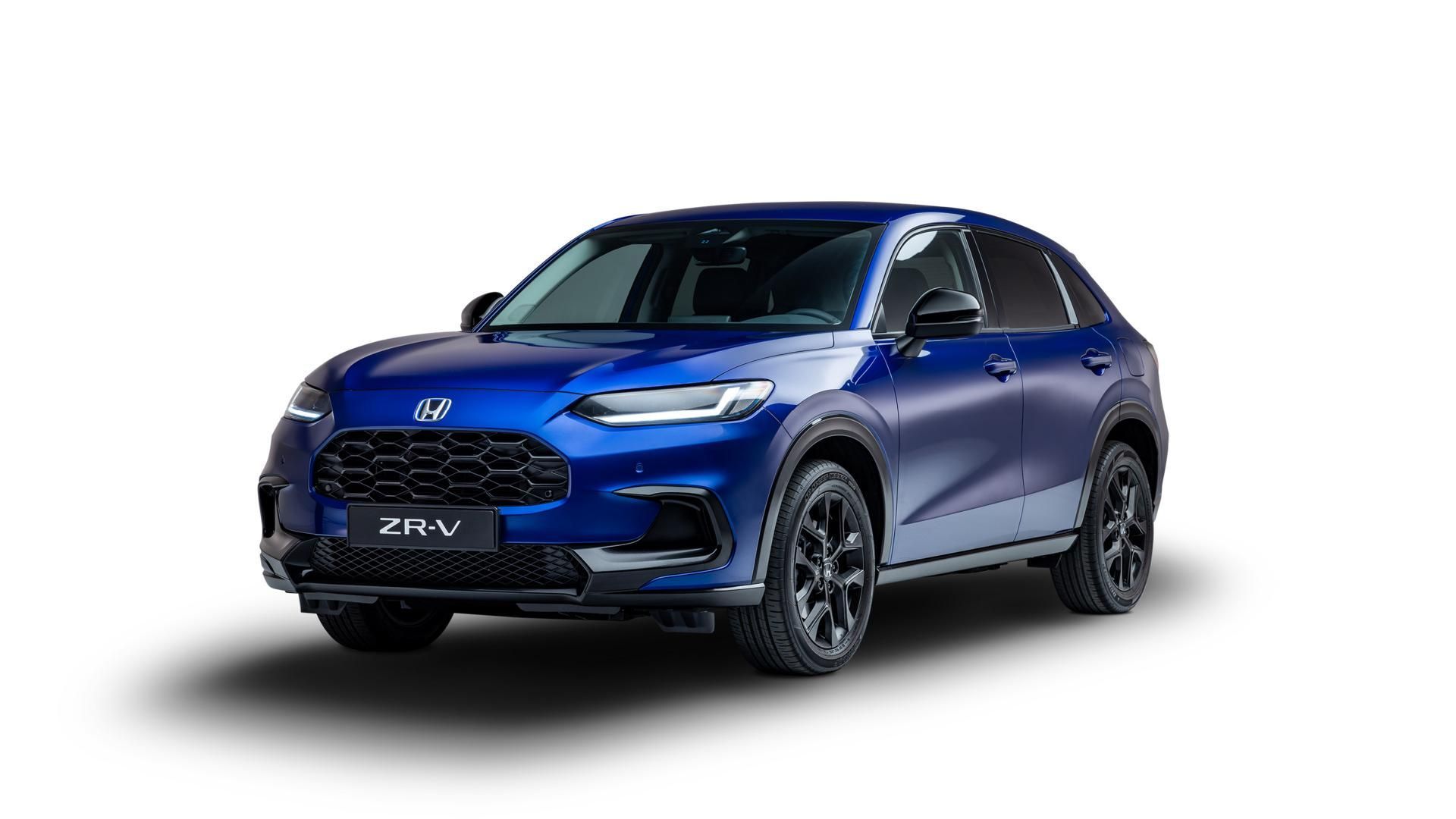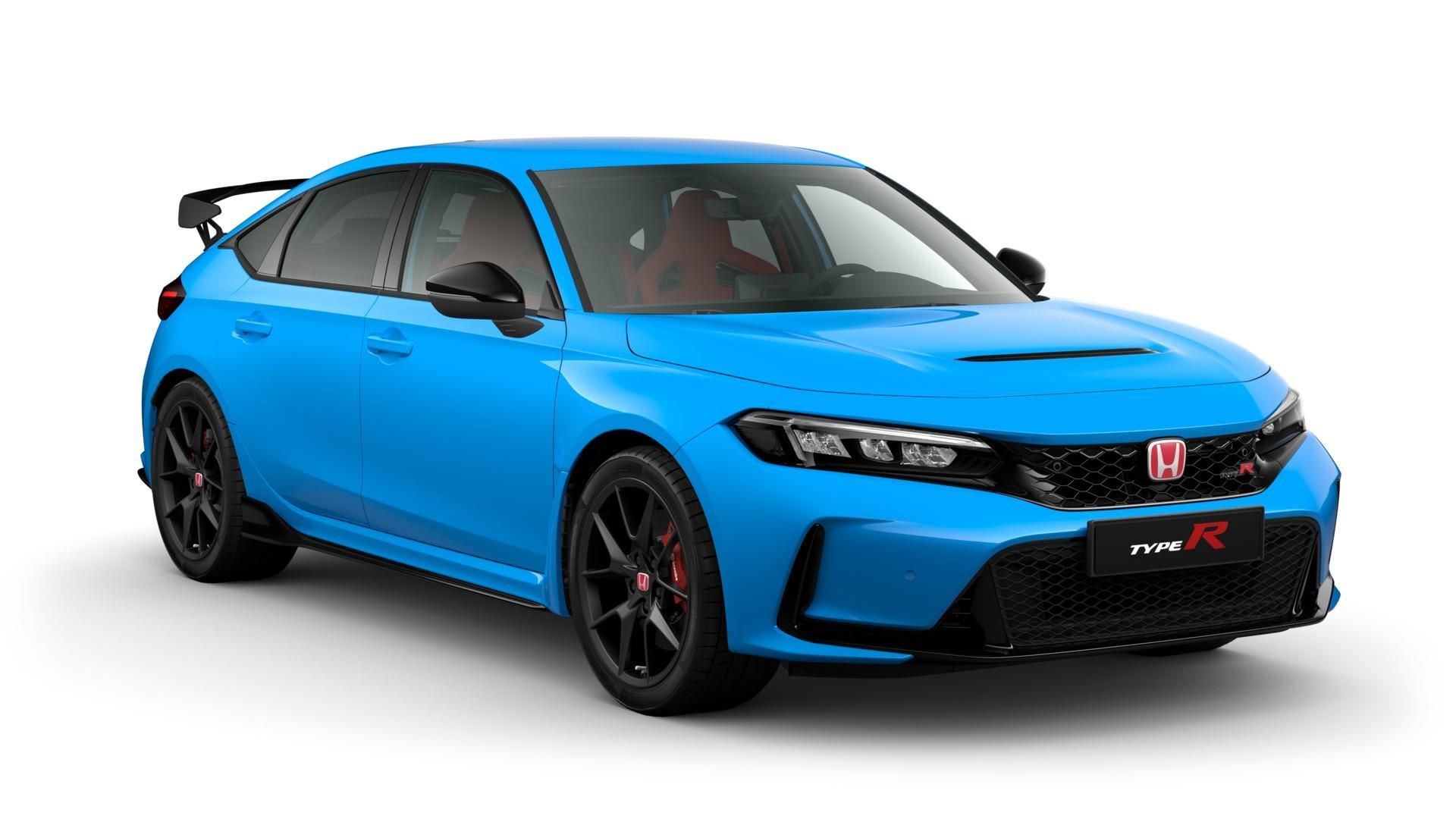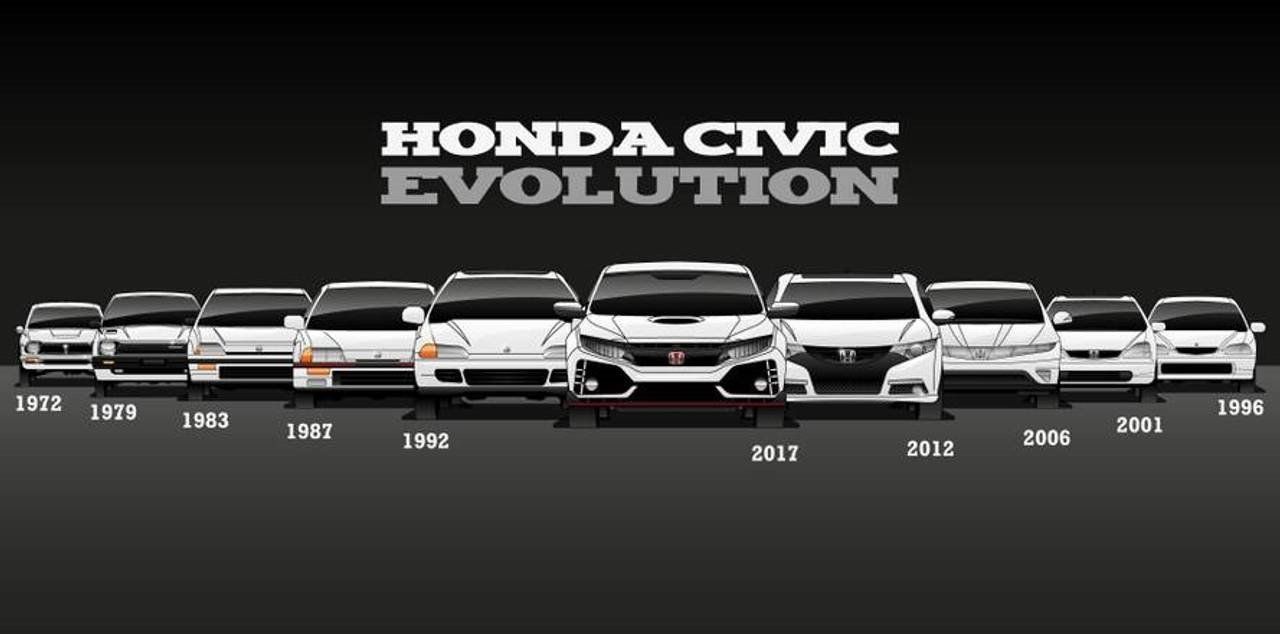Which body-styles is the new Honda Civic available in?
The Honda Civic comes in a choice of five-door hatchback or four-door body styles. Both look equally sleek and sporty, so choosing which one best meets your needs depends on how you use your car and what you need from it.
For example, although both styles offer a large boot, the hatchback has an uninterrupted opening – ideal for those times when you might need to fold down the back seats and load a couple of bikes.
The cabin of the hatchback and saloon is the same size, meaning whichever you choose, everyone travelling will enjoy the outstanding comfort and calm, quiet space of the Civic.
Which insurance group is the Honda Civic?
The impressive insurance group ratings of the new Civic are the result of continual research and development by Honda’s engineers.
Depending on which version you choose, it has insurance group ratings from 15E to 22E. The groups are determined by Thatcham Research and range from group 1 (the cheapest cars to insure) up to group 50 (the most expensive). These take into account the price of the car, repair times, potential damage, replacement parts, safety and security features, as well as its performance.
How many generations of Honda Civic have there been?
The current Civic on display in Honda showrooms was introduced in 2017. It’s the tenth generation since the model first hit the road.
The latest incarnation builds on the respected reputation the Civic has for standout design, a responsive and engaging driving experience, comfortable and spacious interior, impressive reliability and excellent levels of safety.
Since the first model hit the road in 1972, the Civic has grown considerably, helping Honda give drivers more of everything they want – more room, more technology, more safety features and more comfort. The first generation Civic was 3551mm long, whereas the current Civic 5 Door is 4518mm.
The 10 generations of Honda Civic by year
1. First generation: 1972 – 1979
2. Second generation: 1979 – 1983
3. Third generation: 1983 – 1987
4. Fourth generation: 1987 – 1991
5. Fifth generation: 1992 – 1995
6. Sixth generation: 1996 – 2000
7. Seventh generation: 2001 – 2005
8. Eighth generation: 2006 – 2011
9. Ninth generation: 2012 – 2015
10. Tenth generation: 2017 to present
What are Honda Civic performance parts?
Honda offers a range of accessories that have been designed to let drivers express themselves or adapt their car to better suit their lifestyle.
These can be ordered with a new car, or the expert team at your local Honda dealer can arrange for these parts and accessories to be fitted to your Civic.
The range includes the latest technology, such as Honda’s acclaimed 3D sound system, wireless chargers for smartphones and tablet holders for passengers in the back seats. Or how about standing out with a cosmetic makeover, with a rear spoiler on the roof, aluminium sports pedals and stylish alloy wheels?
There are also practical items, designed to fit your Honda Civic perfectly. Choose dog and luggage guards for the boot, roof boxes for holiday escapes and bike carriers for the perfect day or more on two wheels.
Choosing the right tyres for your Honda Civc
It’s important to fit the right replacement tyres to your Honda Civic, because it ensures the driving experience remains just as satisfying and safe as the day it left the Honda factory.
Honda’s engineers spend an average of two to three years perfecting the research and development of all new models, and the brand and version of tyre selected as original equipment is chosen to bring out the very best of every Honda.
To check which tyres your Civic needs, consult the vehicle handbook. This will detail the correct size and speed rating of tyre for your model. You can also speak with your local Honda dealer to check which brand of tyre meets Honda’s exacting standards for the Civic
What are the tyre sizes for the Honda Civic hatchback models?*
| Honda Civic Engine and Spec | Recommended Tyre Size |
|---|---|
| 126PS VTEC Turbo SE | 215/55 R16 |
| 126PS VTEC Turbo SR | 235/45 R17 |
| 126PS VTEC Turbo EX | 235/45 R17 |
| 182PS VTEC Turbo Sport | 235/45 R17 |
| 182PS VTEC Turbo Sport Plus | 235/45 R17 |
| 182PS VTEC Turbo Prestige | 235/45 R17 |
| 120PS 1.6 i-DTEC SE | 215/55 R16 |
| 120PS 1.6 i-DTEC SR | 235/45 R17 |
| 120PS 1.6 i-DTEC EX | 235/45 R17 |
| Type R | 245/30 R20 |
*For models from 2017 and onwards
When choosing new tyres, it helps to know what tyre dimensions mean. So, taking the example of the original tyre size for the Honda Civic 1.0 VTEC Turbo – 215/55 R16 – here’s how they work:
- 215 – Measured in millimetres, this is the tyre’s width. The measurement is from the tyre’s mid-point of its sidewall to the same point on the opposite sidewall.
- 55 – Shown as a percentage of the tyre’s section width, this is the height of the tyre’s sidewall. So, in this example, the tyre’s sidewall is 55% of the tyre’s section width, or 118mm.
- R – This is the construction code, which indicates how the tyre is constructed. R denotes the tyre is radial, which is a type of tyre construction where the cord plies are arranged at 90 degrees to the direction of travel, or radially (from the centre of the tire).
- 16 – This shows the diameter of the tyre rim, which is measured in inches – taken from the wheel flange where the tyre is seated (bead seat area) to the same point on the opposite side.
Honda Civic 5 Door’s performance, economy and emissions
In Sport trim, the 1.5-litre VTEC turbo petrol version of the 2019 Civic 5 Door can accelerate from 0-62mph in 8.2 seconds and has a top speed of 137mph, when fitted with a manual gearbox. Its fuel economy is 46.3mpg on the combined cycle, and CO2 emissions are 128g/km.
What is the power of the engine range in the Honda Civic?
- 1.0-litre VTEC turbo petrol: 126PS
- 1.5-litre VTEC turbo petrol: 182PS
- 1.6-litre i-DTEC turbo diesel: 120PS
What is the choice of gearboxes for the Honda Civic?
Honda believes in offering drivers choice, which is why every petrol and diesel engine in the Civic range comes with either a manual, automatic or continuously variable transmission (CVT) gearbox.
The manual gearbox is a six-speed unit, ideal for those who relish the satisfying process of driving. The advanced automatic gearbox is a nine-speed unit, which has been developed to deliver outstanding response and fuel economy, together with low CO2 emissions. The CVT transmission offers smooth and seamless acceleration.
All three gearboxes drive the front wheels of the Civic.
What are the benefits of front-wheel drive in the Honda Civic?
Since the first-generation model was released in 1972, the Honda Civic has featured a front-wheel drive layout. The latest model is no exception.
There are many benefits for both engineers and drivers. The space-efficient layout it affords means there’s more room in the cabin for passengers and more space beneath the bonnet for crash protection.
What’s more, by placing the mass of the engine over the front wheels, the tyres have a high level of traction, which ensures they provide stable and secure road holding in all driving conditions.
Also, a front-wheel drive car is generally lighter than a comparable rear-wheel drive car, because there is no need for robust components to send the engine’s power to the back wheels. That’s good news for fuel economy and emissions.
Which version of the Honda Civic is fastest?
For maximum get up and go, the new 1.5-litre VTEC Turbo is the version that offers the most spirited performance.
Its four-cylinder petrol engine has been tuned to deliver a rousing 182PS, and because it is turbocharged, like all engines in the Civic family, it offers flexible performance – pulling strongly from low in the rev range.
In Sport trim, it powers the Civic 5 Door from 0-62mph in just 8.2 seconds and has a top speed of 137mph. Meanwhile, its fuel economy is just as impressive, with the potential for achieving 46.3mpg on the combined cycle.
Available with a precise 6-speed manual gearbox or smooth CVT transmission, it comes in Sport, Sport Plus or Prestige trims in the 5 Door body. Why not try it for yourself by booking a test drive at your convenience?
Which Honda Civic has a VTEC engine?
Every petrol-powered engine in the Honda Civic range features Honda’s ingenious VTEC operating system.
It stands for Variable Valve Timing and Lift Electronic Control and is a type of variable valve-timing system that ensures that the engine delivers outstanding performance in all driving conditions.
VTEC varies oil pressure to shift between different cam profiles. At higher engine speeds, a second cam profile allows greater valve lift, which allows more air into the cylinder. This helps generate more power.
It means that drivers can enjoy outstanding fuel economy at low engine speeds, along with thrilling response at higher engine speeds.
What are the specifications of the VTEC engines in the Honda Civic?
The latest Honda Civic offers a choice of two petrol-powered engines with the Japanese company’s acclaimed VTEC technology.
The 1.0-litre VTEC Turbo is a 988cc, three-cylinder petrol engine, with four valves per cylinder. It develops peak power of 126PS at 5,500rpm and peak torque of 200Nm at 2,250rpm.
The larger, 1.5-litre VTEC Turbo is a 1597cc, four-cylinder petrol engine, with four valves per cylinder. It develops peak power of 182PS at 5,500rpm and peak torque of 240Nm continually between 1,900rpm and 5,000rpm.
To view the complete specifications of the Honda Civic range, download the brochure.
How big is the boot in the Honda Civic?
The 5 Door, hatchback version of the Honda Civic boasts a boot with between 420 and 478 litres of cargo capacity, depending on the version, and measured up to the car’s window line.
Fold down the back seats and that grows to a very generous 770 or 828 litres, again, measured to the window line. If you need to fill the car to the roof, then it can carry between 1187 and 1267 litres.
Every version of the 4 Door saloon has 519 litres of space for everything you can throw at it. And for longer loads, the rear seats fold down.
Which Honda Civic comes with a sunroof?
If you fancy fresh air and sunshine at the touch of a button, certain trim levels in the Honda Civic range include a glass sunroof as standard, which incorporates a sunshade.
For 5 Door models, EX, Sport Plus and Prestige all feature the sunroof. With the 4 Door range, the sunroof is standard on EX models.
The glass roof offers a tilt and vent function, or glides back to open the roof to the skies above. And with a clever, built-in wind deflector, turbulence is a thing of the past.
Is a tow bar available with the Honda Civic?
Whether you like setting sail in a boat or fancy a weekend away with a caravan, certain versions of the latest Civic are your ideal towing partner.
Both the 1.0-litre VTEC Turbo petrol and 1.6-litre i-DTEC Turbo diesel versions can be ordered with an optional tow bar. In fact, there’s a choice of two: a fixed tow bar or a removable one.
The tow bars have a capacity of up to 1400 kilos, and include a 13-pin harness for electrical connections. The fixed tow bar costs £785 and the removable tow bar is £895.
Where is the Honda Civic built?
For European markets, the current 10th generation Honda Civic is built in Britain and Turkey.
The 5 Door hatchback is made in Swindon, Wiltshire, at the 370-acre Honda of the UK Manufacturing Ltd factory (known as HUM), while the 4 Door saloon is assembled in Turkey’s western province of Kocaeli.
However, in February this year, the Honda Motor Company in Japan announced its intention to stop European production of the Civic in 2021.
Katsushi Inoue, Chief Officer for European Regional Operations, Honda Motor Co., Ltd., and President, Honda Motor Europe said, “In light of the unprecedented changes that are affecting our industry, it is vital that we accelerate our electrification strategy and restructure our global operations accordingly. As a result, we have had to take this difficult decision to consult our workforce on how we might prepare our manufacturing network for the future.”










